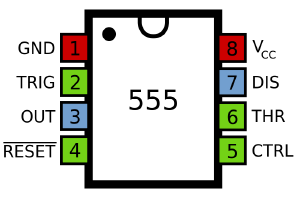Fachmodul
Printing Acoustic Interfaces
Instructor: Clemens Wegener
Credits: 6 ECTS, 2 SWS
Capacity: max. 12 students
Language: English
Location: Marienstrasse 7B, R002
First Meeting: 9th April 2019, 9:15 AM
Description
This course focuses on printing acoustic sensors for the sensing of structure-born sound. Print processes like silver ink-jet and screen printing can be applied to manufacture acoustic sensors. Tapping and sliding gestures on an acoustic surface have a different sound impact, which can be leveraged to design new interaction concepts. The course focuses on developing a concept for acoustic interaction and developing a working prototype with appropriate sensors and signal processing abilities to materialize your concepts.
Admission requirements
Knowledge in Hard- and Software would be highly appreciated, but is not a requirement.The needed functional components will be explained throughout the course. In parallel you will develope your own interaction concepts or product prototypes. For buying electronic components, a little budget of 10€ to 20€ is neccessary. Of course you can keep your manufactured works.
Evaluation
Successful completion of the course is dependent on regular attendance, active participation, completion of assignments, delivery of a relevant semester prototype and documentation. Please refer to the Evaluation Rubric for more details.
Eligible participants
Qualified MFA Medienkunst/-gestaltung, MFA Media Art and Design, MSc MediaArchitecture candidates
Syllabus (subject to change)
- Session 1: Examples of acoustic interfaces
- Session 2: Introduction to printed electronics workflow
- Session 3: Brainstorm for project proposals
- Session 4: Workshop: Printed electronics
- Session 5: Introduction to the electronic workshop and tools
- Session 6: Amplifier circuits and technology
- Session 7: Prototyping Workshop 1
- Session 8: Prototyping Workshop 2
- Session 9: Connecting to Arduino or Raspberry Pi
- Session 10: Audio signal processing in Pure Data 1
- Session 11: Audio signal processing in Pure Data 2
- …
- Session XX: Final project presentations (9th July)
Course Material
Here you find learning material in the form of circuit simulations, that lead you to the understanding of amplifiers and other signal conditioning circuits that we use throughout the course. Feel free to experiment with them, they are editable and saved via the encoded URL. You cannot destroy them and it is easy to share edited versions.
- The foundation of understanding electric circuits is Ohm's law.
- A very powerful concept is the voltage divider, it allows us to attenuate (but not amplify!) any voltage in any circuit
voltage divider with even resistors
- We will use the OpAmp (=operational amplifier) to amplify the small signals from our microphones to usable and less noisy signals before we digitize them in the computer
stabilized opamp as a source follower
The concept of a Transformer Microphone
To get rid of our big magnets, we build an electro magnet with the help a a sending coil that will build up a magnetic field. When the current though this sending coil changes, it will induce a magnetic field, that we can use to induce a current in the second (receiving) coil. Two coils that share their magnetic flux via the air are called an "air core transformer". Both coils will be printed on paper, but on different sheets, leaving a gap filled with air. If the sheets are close together the second coil induces more current and lesser when it is further away. It is important, that the currents change constantly, because only changing currents can induce magnetic fields. We will use a high frequency changing current (50Khz) on the sending coil, that we will receive on the other coil. When we change the distance between the coils, the actual amplitude (volume) of this high frequency tone increases or decreases. To get the actual volume information of this high frequency tone, we use the half wave rectifier.
Sender: Square Wave Generator Circuit
To send the high frequency current, we will use the 555 Timer chip configured as a square wave generator. This circuit has little components and is comparably easy to build. It uses only one capacitor and one resistor to set the frequency of the square wave. You can find the circuit in the link below. Be sure to match the pinout in the circuit according to the figure below.
Receiver: Half Wave Rectifier Circuit
To get rid of our big magnets, we build an electro magnet with the help a a sending coil that will build up a magnetic field. When the current though this sending coil changes, it will induce a magnetic field, that we can use to induce a current in the second (receiving) coil. Both will be printed on paper, but on different sheets. If the sheets are close together the second coil induces more current and lesser when it is further away. It is important, that the currents change constantly, because only changing currents can induce magnetic fields. We will use a high frequency changing current (50Khz) on the sending coil, that we will receive on the other coil. When we change the distance between the coils, the actual amplitude (volume) of this high frequency tone increases or decreases. To get the actual volume information of this high frequency tone, we use the half wave rectifier.
Further Reading
Suganuma, Katsuaki: Introduction to Printed Electronics. New York: Springer Science+Business Media, 2014.
Y. Kawahara, S. Hodges, N. Gong, S. Olberding and J. Steimle, "Building Functional Prototypes Using Conductive Inkjet Printing," in IEEE Pervasive Computing, vol. 13, no. 3, pp. 30-38, July-Sept. 2014.
Links
Inspiration for your prototpyes:
